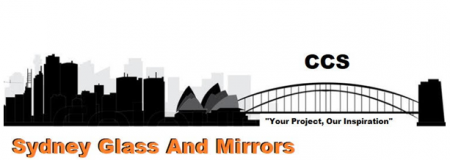When a school year begins, students are dealing with new classes, sports and other school-related activities. Psychologist Brett Laursen, PhD, talks about the science behind peer pressure and what parents can do to help their kids. Responding to peer pressure is part of human nature — but some people are more likely to give in, and others are better able to resist and stand their ground. People who are low on confidence and those who tend to follow rather than lead could be more likely to seek their peers’ approval by giving in to a risky challenge or suggestion. People who are unsure of themselves, new to the group, or inexperienced with peer pressure may also be more likely to give in.

As they make decisions themselves, they’ll feel good about the choices they make and may be more likely to choose to do the right thing. Teens should never feel the pressure to say yes when their gut tells them no. Having the ability to say no and mean it might even be lifesaving.
What Is Peer Pressure?
Unspoken pressure to conform can play a significant role in substance use. According to a 2012 study, passive peer pressure has a greater effect on teen smoking than active pressure. In other words, teens with friends who smoke are more likely to also smoke. Surround yourself with people who don’t create any type of pressure https://ecosoberhouse.com/article/dealing-with-peer-pressure/ on you to do certain things they respect your choices. If they encourage you to do good things like going to the gym or studying hard then it’s good but any type of negative influence is not acceptable. This occurs when your friends or peers encourage you to make healthy choices or pursue constructive activities.
- For example, you may feel pressure to do unsafe things that have risks you may not fully know.
- People may feel pressure to conform so they fit in or are accepted, or so they don’t feel awkward or uncomfortable.
- If parents are always deciding things for them, they send the message that their teens are incapable.
- But it’s the quality — not quantity — of time spent that’s truly important.
- For example, when you notice that your friends are wearing expensive designer clothes, you also feel the urge to buy and wear such clothes.
Track your feelings over days and weeks to witness personal growth unfolding through difficult lessons learned about human psychology. Refer to the below questions, which you can ask yourself while dealing with peer pressure. Skills that are needed to work effectively with people, have meaningful friendships, and healthy romantic and family relationships in the future. While peers become increasingly important during adolescence, parents continue to play a vital role.
Types of peer pressure
If you are a young person who has experienced peer pressure, you are certainly not alone. From my own experience, I have seen how peer pressure affects people at school, college, university and beyond into adult life. Sometimes, though, the stresses in your life can actually come from your peers.
- Now aged 20, I am still learning how to manage pressure from my peers.
- While some people may experiment with alcohol or drugs once or twice and decide it’s not for them, others who begin using a substance may find it difficult to quit.
- The Children’s Health pediatric psychiatry and psychology department provides comprehensive services to support children’s and teens’ mental health.
- Rather than worrying about the effects of their children’s friendships, parents would do well to focus on creating a positive, supportive home environment.
Rising above peer pressure means not giving in to the pull of others to act in a certain way. No matter your age, you can practice not giving in to negative peer pressure and work on surrounding yourself with more positive influences. Being pressured by peers can be a stressful experience, whether it happens in person or online.
Overcoming Peer Pressure
When a teachable moment presents itself, ask how your teen would have responded to a similar situation. Or as you’re riding together in a car you may be exposed to real life situations on the streets around you. Comment on what you notice and ask your teen to consider how the kids you pass should handle a given situation. These strategies allow teens to develop skills without forcing them to focus on themselves. ” to friends who engage in behavior we don’t like, that isn’t always realistic. Some young people choose to maintain friendships at the expense of their values.
Peer pressure is something we all encounter at some point in our lives whether it’s in school/college, at work, or within our social circles. Unspoken peer pressure, on the other hand, is when no one verbally tries to influence you. However, there is still a standard set by the group to behave in a certain way. You might see your friends experimenting with drugs and alcohol and it’… Negative peer pressure, on the other hand, involves social pressure to do something dangerous or damaging to themselves or others.
For example, of the 29% of teens who responded they felt peer pressure to look “good,” girls were more likely than boys to say they feel a lot of pressure to look good (35% vs. 23%). Peer pressure in younger children tends to be limited to copying bad behaviors such as acting out or taking things that https://ecosoberhouse.com/ don’t belong to them. Is it because all your friends are doing it or you are afraid that if you don’t do particular things your group is doing then they will not talk to you? Crosscheck the reason behind the urge to do something take some time and think about that situation from different angles.
How to deal with negative peer pressure – Citizen Digital
How to deal with negative peer pressure.
Posted: Tue, 10 Oct 2023 07:00:00 GMT [source]





















